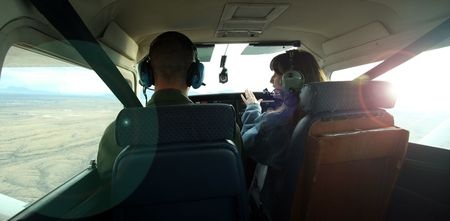Overview
Flytenow, Inc. was a web-based service that permitted private pilots to offer their planned itineraries to passengers willing to share in operational expenses. Private pilots have long been permitted to share expenses with passengers provided they also shared a common purpose in the trip. Flytenow sought to facilitate these arrangements by matching pilots with passengers willing to chip in. As with Uber, the ridesharing app that initially operated in the regulatory gray zone between private vehicles and taxies, it was unclear where Flytenow’s business model fell within the aviation regulatory spectrum. The FAA provided certainty, advising Flytenow that pilots arranging flights through the website would be operating as “common carriers,” and would thus require commercial licenses.
Flytenow asserted two main challenges to the FAA’s decision. First, Flytenow argued that the FAA was wrong to find that expense contributions from a passenger, which private pilots are permitted to accept under some circumstances, is a form of compensation. Second, Flytenow argued that the FAA was wrong to determine that pilots on Flytenow’s website became common carriers by holding themselves out as offering transportation to the public.
In Flytenow, Inc. v. Federal Aviation Admin, the U.S. Court of Appeals for the D.C. Circuit Court affirmed the FAA’s decision. The court noted that the general rule is that private pilots may not carry passengers for compensation. Under certain circumstances, private pilots may share expenses; but that does not mean that shared expenses are not a form of compensation. Rather, permitting pilots to share expenses is an exception to the rule against compensation, regardless of whether the pilot and passenger share a common purpose. Thus, the court held the FAA was correct to find that Flytenow pilots were flying for compensation. The court then held that Flytenow pilots were holding themselves out as offering transportation to the public such that they would be acting as air carriers. Though Flytenow’s website was limited to members, in reality any person could enroll, and any prospective passenger searching online could readily book through Flytenow’s website. The lack of any rate schedules and the ability of a pilot to refuse service were insufficient to remove Flytenow flights from the realm of common carriers. The court dismissed Flytenow’s “slippery slope” argument, reasoning that the FAA’s interpretation would have no effect on a private pilot’s ability to communicate to extend invitations to passengers for common purpose expense sharing flights, provided the invitations were directed to defined and limited groups.
The court then held that Flytenow pilots were holding themselves out as offering transportation to the public such that they would be acting as air carriers. Though Flytenow’s website was limited to members, in reality any person could enroll, and any prospective passenger searching online could readily book through Flytenow’s website. The lack of any rate schedules and the ability of a pilot to refuse service were insufficient to remove Flytenow flights from the realm of common carriers. The court dismissed Flytenow’s “slippery slope” argument, reasoning that the FAA’s interpretation would have no effect on a private pilot’s ability to communicate to extend invitations to passengers for common purpose expense sharing flights, provided the invitations were directed to defined and limited groups.
We may never know whether Flytenow would have been a success had it met with FAA approval. And Flytenow would have had to overcome a number of other difficult obstacles (risk management, resistance from established aviation businesses, etc.) just to make a go of it. Undoubtedly, though, Flytenow’s business model was an innovative and modern approach to general aviation -- and a novel approach with the potential to give a struggling industry a boost. Unfortunately for Flytenow (and similar businesses hoping to bring “sharing” technology in the aviation industry) its business model was a square peg that would not fit into any regulatory round holes.
